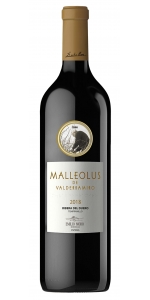Wine from Bodegas Moro
The history of Bodegas Emilio Moro dates back three generations. The grandfather of the third generation of Emilio Moro was born in 1891, and his son, Emilio Moro, was born in 1932. Both were born into a wine growing environment, surrounded by vineyards. They grew up treading grapes in their hometown of Pesquera de Duero in the province of Valladolid.
Emilio Moro instilled in his son a love of wine and his son, in turn, passed this on to the third generation, who currently manage the winery.
Innovation was born in our wineries when Emilio Moro planted the Tinto Fino Clone, differentiating us forever. From that moment on, we've not stopped innovating. From the development of indigenous yeasts, digital field notebooks, drones and geolocation in the vineyard, to our flagship sensing project, Sensing4Farming.
In addition, there is a film commitment to innovation in communication, and the creation of a culture of innovation that involves all stakeholders in our value chain.
Deep cherry red in color with a garnet rim. On the nose, it is intense and elegant, with a base of ripe fruits that blends with the subtle tertiary aromas of sweet spices and cocoa. On the palate, it is balanced, full-bodied but with sweet and pleasant tannins, with a long and very persistent aftertaste.
Review:
- back
Selected Options
Wineries
Categories
Pricing
Countries
Regions
Grape Types
Wineries
Organic/Free Shipping
K Vintners The Beautiful Syrah 2018 is made from 97% Syrah, 3% Viognier.
A multi-layered beauty; perfumed, lovely. Super dark rose. Broken, unfiltered cigarette, Amaro. Densely colored with a shimmering red rim. Giving, yet just an inch at a time. One to ponder. One to enjoy.
Review:
The 2018 Syrah The Beautiful Powerline Vineyard comes from a vineyard outside of Walla Walla, in the foothills of the Blue Mountains. It was not destemmed and was brought up in neutral, larger barrels. An exotic nose of ripe blue and black fruits, lavender, sappy flowers, and herbes de Provence-like nuances give way to a medium to full-bodied, richly textured, structured wine with a mouth-filling, layered, meaty style that builds nicely with time in the glass. There's always a sappy, almost herbal edge to this beauty, and it ages beautifully. Feel free to open bottles any time over the coming 15-20 years. It would certainly be hard to pick out in a lineup of top Northern Rhône Syrahs.
-Jeb Dunnuck 97 Points
Mas Redonne Bandol Rose is made from 55% Mourvèdre, 35% Cinsault, 10% Grenache.
Nice light salmon color, typical of Bandol.
The wine expresses some citrus, Pomelos (a delicious type of grapefruit) and lots of white fruit aromas and minerality.
The flavors are fresh, fruity and very aromatic with tons of apricot and mango.
Grilled salmon, chicken dishes as well as salads, sushi and sashimi.





